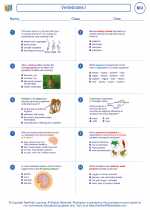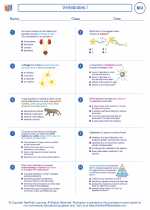Uranus
Uranus is the seventh planet from the Sun and it is classified as an ice giant. It is named after the ancient Greek deity of the sky Uranus, the father of Cronus (Saturn) and grandfather of Zeus (Jupiter). Uranus is the third largest planet in our Solar System, both in diameter and mass, after Jupiter and Saturn.
Physical Characteristics
- Diameter: 50,724 kilometers
- Mass: 14.5 times the mass of Earth
- Composition: It is primarily composed of ice, rock, and gas.
- Atmosphere: The atmosphere of Uranus is mainly composed of hydrogen, helium, and methane.
- Rings: Uranus has 13 known rings, which are composed of dark, narrow particles. The rings are relatively recent discoveries, having been identified in 1977.
- Moons: Uranus has 27 known moons, the largest ones being Titania, Oberon, Umbriel, Ariel, and Miranda.
Orbit and Rotation
Uranus has a highly inclined axis of rotation, which means it essentially orbits the sun on its side. This gives rise to extreme seasonal variations on the planet, with each pole experiencing 42 years of continuous sunlight followed by 42 years of darkness. The most widely accepted theory for the planet's extreme tilt is that it was knocked on its side by a massive impact early in its formation.
Exploration
Uranus has been visited by only one spacecraft, Voyager 2, which flew by the planet in 1986. The spacecraft provided the first close-up images of the planet and its moons.
Study Guide
When studying Uranus, it's important to focus on the following key points:
- Physical characteristics, including its diameter, mass, composition, atmosphere, rings, and moons.
- Unique features such as its highly inclined axis of rotation and extreme seasonal variations.
- Comparisons to other planets, particularly its classification as an ice giant and its differences from gas giants like Jupiter and Saturn.
- Historical and modern exploration of Uranus, including the Voyager 2 mission and its findings.
Understanding these aspects will provide a comprehensive grasp of the planet Uranus and its place in the Solar System.
[Uranus] Related Worksheets and Study Guides:
.◂Biology Worksheets and Study Guides High School. Vertebrates I

 Worksheet/Answer key
Worksheet/Answer key
 Worksheet/Answer key
Worksheet/Answer key
 Vocabulary/Answer key
Vocabulary/Answer key
 Vocabulary/Answer key
Vocabulary/Answer key
 Vocabulary/Answer key
Vocabulary/Answer key
